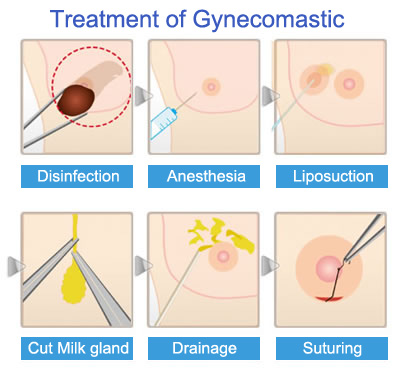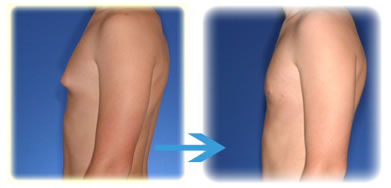Gynecomastia, especially in pubertal males, often goes away on its own within about six months, so observation is preferred over specific treatment in many cases. Stopping any offending medications and treatment of underlying medical conditions that cause gynecomastia are also mainstays of treatment.
Medications are more effective in reducing gynecomastia in the early stages, since scarring often occurs after about 12 months. After the tissue has become scarred, medications are not likely to be effective, and surgical removal is the only possible treatment.
![]()
Medications that have been used to treat gynecomastia include:
.Testosterone replacement has been effective in older men with low levels of testosterone, but it is not effective for me who have normal levels of the male hormone.
.Clomiphene, and anit-estrogen medication has been used to treat gynecomastia. It can be taken for up to 6 months.
.The selective estrogen receptor modulator tamoxifen has been shown to reduce breast volume in gynecomastia, it was not able to entirely eliminate all the breast tissue.
![]()
 |
Medical treatment of gynecomastia that has been present for over one year is usually futile. If chronic gynecomastia is treated, surgical removal of glandular breast tissue is usually required.
Surgical approaches to the treatment of gynecomastia include subcutaneous mastectomy, liposuction-assisted mastectomy, laser-assisted liposuction, and laser-lipolysis without liposuction. Complications of mastectomy may include, surgical wound infection, breast asymmetry, changes in sensation in the breast, necrosis of the areola or nipple, , noticeable or painful scars, and contour deformities.
Radiation therapy and tamoxifen have been shown to help prevent gynecomastia and breast pain from developing in prostate cancer patients who will be receiving androgen deprivation therapy. The efficacy of these treatments is limited once gynecomastia has occurred and are therefore are most effective when used prophylactically.
![]()










